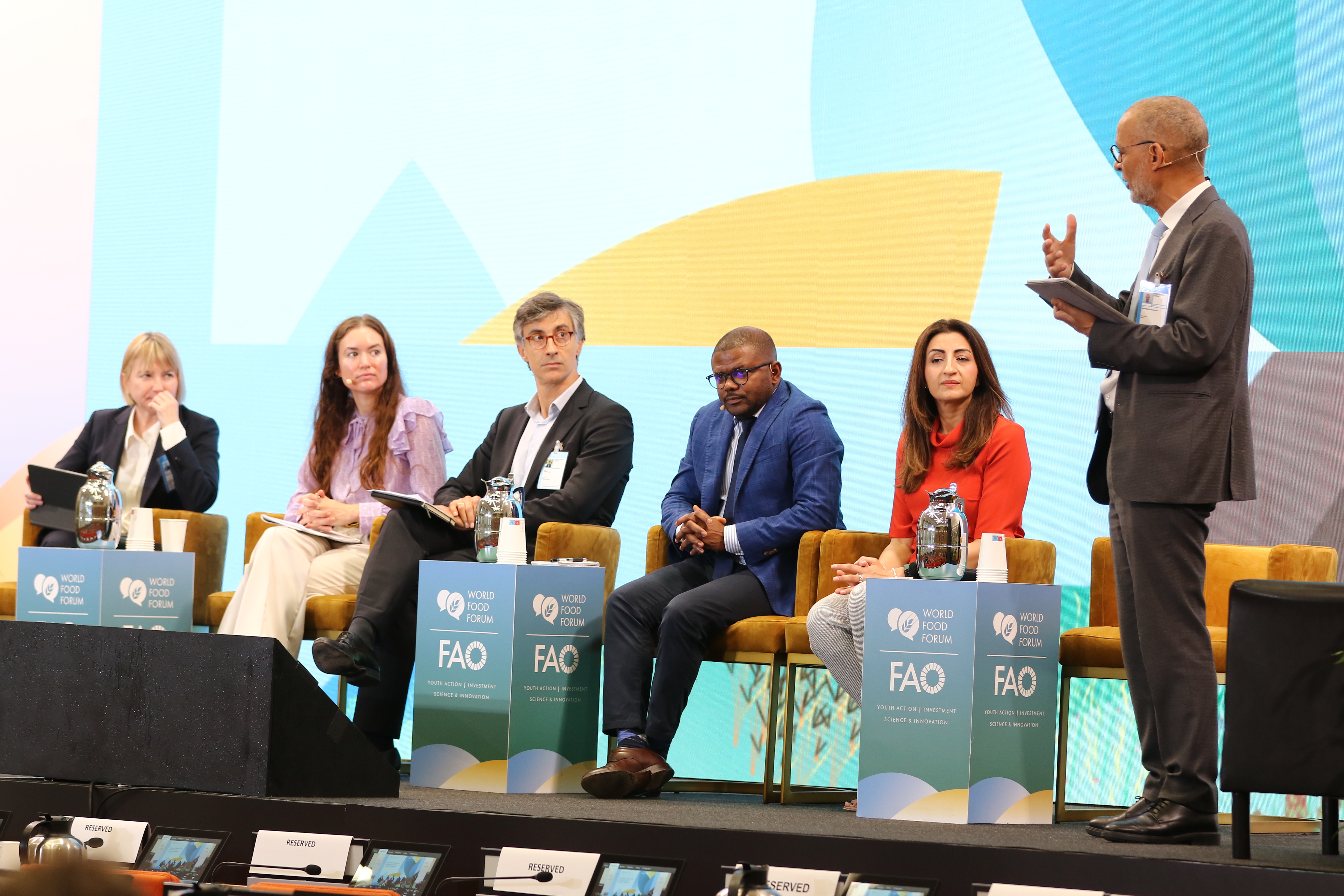Pioneering innovative finance for climate action in agrifood systems

The world’s agrifood systems need to become greener, more efficient and more resilient to climate change. Transforming them by 2030 calls for around USD 300 to 350 billion in new investments annually.
Innovative finance could help, according to experts in a panel at the Science and Innovation Forum - a hybrid event joined by over 200 attendees - and part of the week-long World Food Forum 2023 in Rome in October.
“Traditional finance and aid aren't enough and public funds alone can't meet the demand,” said Mohamed Manssouri, FAO Investment Centre Director and panel moderator. “We need – without delay – innovative ways to mobilize more public and private investments to close the financing gap.”
How do we scale?
While many sustainable agrifood innovations exist, translating them into scalable solutions is challenging.
Anup Jagwani, Senior Global Sector Manager for Agribusiness and Forestry at the International Finance Corporation, said it is not merely about inventing new technologies, but also about creating innovative financial instruments, including blended finance models, to unlock much needed funds to propel those solutions forward.
Jagwani noted that some areas – like precision farming and carbon sequestration – have seen substantial development. Yet others, including alternative feed technologies, still need innovation and investment.
Climate finance and green bonds
Natalia Zhukova, Director of the Agribusiness Sector Team at the European Bank for Reconstruction and Development (EBRD), discussed the bank’s Climate Governance Facility. The Facility can assist clients in developing low-carbon pathways and investment plans, and in generating revenue from eco-friendly products, bioenergy and carbon credits.
The EBRD also employs innovative financial instruments and mechanisms such as blended finance, sustainability-linked loans and sustainability bonds.
Isobel Edwards, Executive Director and Vice President of Green, Social, and Impact Bonds at Goldman Sachs Asset Management in The Hague, pointed to the untapped potential of the green bond market – where funds are allocated specifically to environmentally friendly projects and initiatives.
She said that as agriculture has yet to occupy a significant share of the green bond market – worth around 2 trillion euros – there's immense potential for scaling finance, particularly in adaptation and resilience.
Bridging gaps to benefit small-scale farmers
Ayesha K. Khan, Regional Managing Director at Acumen, focused on the unique challenges faced by small-scale agrifood producers.
She underscored the need for innovative finance to bridge the gap between investment practices and the requirements of farmers in underserved areas. She also spoke of the importance of diversifying investment portfolios to minimize risk while advancing financial and social impacts.
Luca Torre, co-CEO of GAWA Capital in Spain, acknowledged that the transition to low-cost banking services has been slow. He proposed that blended finance – by subsidizing interest rates at the fund level – could lower capital costs and make loans more affordable, combined with external support.
Scale, speed, strategy
Peter Umunay, Senior Environmental Specialist at the GEF stressed the need for scalability, speed and strategic collaboration to adapt to rapidly changing agricultural and environmental landscapes. He highlighted the importance of repurposing agricultural subsidies for sustainability.
The GEF's current cycle involves USD 5.3 billion, with around USD 1.6 billion dedicated to integrated approaches, while the Catalytic Fund helps distribute resources transparently to 145 countries, fostering collaboration with governments to scale solutions.
Carbon finance: a game-changer in scaling climate action?
The panelists agreed on the need to make carbon finance accessible, particularly to small-scale producers, and envisioned a future where carbon finance plays a more transformative role in the adoption of climate solutions at the grassroots level.
The panelists concluded by underscoring the collective commitment needed to transform agrifood systems – through substantial investments, sustainable practices and scalable innovative finance solutions.
